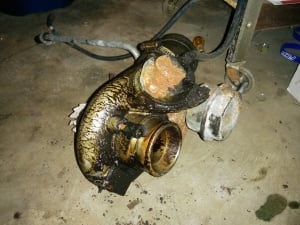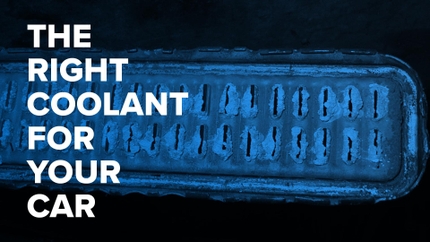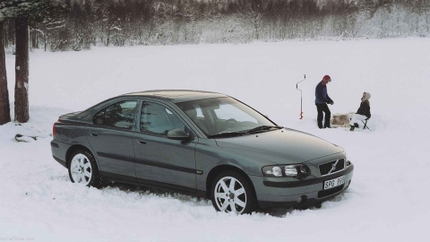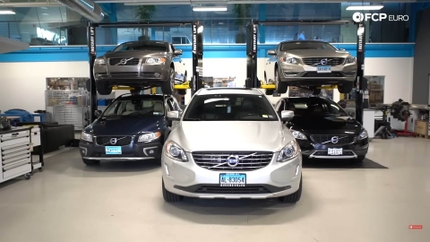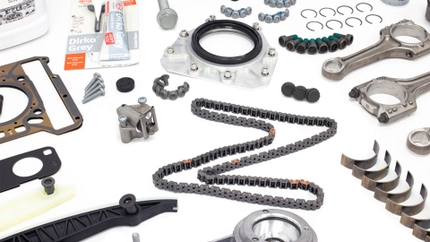Most Volvo owners agree it’s not uncommon to want a bit more power out of their reliable old Swede. Having a turbocharger fitted from the factory means you have flexibility in how you increase your engine's power over stock levels. Or, you may have a turbo that is struggling to deliver your engine's factory rated output. Either way, there are a lot of options to consider to inject new life into your car. This will focus primarily on the 94-00 Volvo 850 and S/V70 models, as well as 98-04 C70 models, however, some of the concepts apply to any turbocharged vehicle. These Volvos are referred to as the “P80” generation, and they all used physically interchangeable Mitsubishi TD04 turbochargers.
Does your turbocharger look like this?
I removed this 15G turbo from my '96 855 Platinum. It appeared to have a few problems that I didn't check before purchasing the car. The compressor housing and bypass valve housings were leaking oil, as well as being bathed in oil from a rear cam seal leak. I will be replacing it with a good used 16T turbocharger, and rebuilding the 15G for future use. (Can't wait to stick it in the dishwasher!)
How do they fail?
As some of these cars are now approaching 20 years old, the seals in these turbochargers tend to become very brittle and cannot do their job well anymore. P80 Volvos use a PCV system that recycles crankcase oil vapor into your turbo’s inlet, and circulates it through the intake tract in order to be reburned. This is normal, and not typically a cause for concern if oil is discovered in your intake piping. It’s possible for this oily mist to escape the turbocharger’s confines if the compressor housing is not sealed well, causing exterior buildup on the turbo.
Oil can also seep out of the compressor bypass valve housing, which was one of the failure points on my turbo pictured above. The bypass valve uses a silicone diaphragm that diverts excess pressure after a sudden reduction in throttle input. If this silicone diaphragm splits or becomes brittle near the edges, intake oil vapor can leak out.
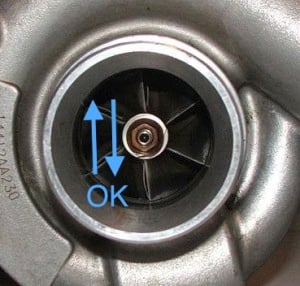
Of course, bearing failure is always one of the top reasons for replacing or rebuilding a Volvo turbocharger. If the compressor wheel can be wiggled up and down, this is not immediate cause for concern unless it is excessive. Turbos are designed to allow slight motion in this direction, as oil flows between the shaft and the bearing. The shaft, in essence, floats on a bath of fresh oil while it spins, and requires a slight 360º gap to give the oil room to flow through. As always, use good judgement (Check YouTube) when determining your turbo's health - this play should be minimal.
If you can push or pull on the shaft and notice any sort of bearing play, it is time to rebuild or replace. This is commonly called "In & out" play, and is a death sentence for your turbo if it is not corrected immediately.
Rebuild, Replace, Upgrade:
P80 Volvos arrived in the United States with six different turbochargers fitted from the factory. This handy chart will help identify the turbo fitted to your vehicle:
15G: 94-97 Volvo 850 Turbo, 850 R
13G: 97 Volvo 850 GLT, 98 S/V70 GLT, 98 V70 XC
13T: 99-00 S/V70 GLT, V70 XC, 99-04 C70 LPT
16T: 98-00 S/V70 T5, 98-04 C70 HPT, 98 V70 R
18T: 99 V70 R
19T: 00 V70 R
Rebuild:
It’s important to know the exact model of turbocharger your vehicle has when shopping for a rebuild kit. Rebuild kits typically range from $50-$150 depending on quality and quantity of parts included. As a do it yourself task, it is very rewarding, but leaves a high risk of screwing something up. I rebuilt the 15G on my ’99 S70 and it is still going strong after two years, knock on wood.
When rebuilding, maintaining balance between the compressor and turbine wheels is crucial. Their orientation must be marked in relation to the turbo’s center section prior to disassembly, or else the turbo will require a professional re-balance. This service is good to do even if you don’t mark the wheels, but in most cases can be overlooked if you take your time. My "hand-balance" is still going strong with no external leaks or oil burning, so it is possible to do correctly in the comfort of your basement. I needed to get a good set of snap ring pliers, and a 1/4” drive torque wrench for the turbine shaft nut.
Speaking of that nut... The one on my 15G was right hand threaded, just like most fasteners. (Lefty-Loosey) I’ve found that the T series turbos (16T, 18T, 19T) are left hand threaded, (Righty-Loosey) so be very careful loosening the nut on your turbo! It may vary.
Most rebuild kits include great instructions and there are always a few great comprehensive tutorials that pop up on Youtube. Just remember to take your time, get the right tools, and have fun with it!
Replace:
Lower mileage turbos are almost always a safe bet when looking to replace, not rebuild. I wouldn’t hesitate to install a turbocharger with 80-120K on my Volvo. TD04 turbos are very reliable, and if you find a dry example of one that has been well cared for, they tend to last a very long time, even at increased boost levels above stock.
Upgrade:
The upgrade route is easy, since there are only four options regardless of what you drive. For cars originally equipped with a 13G/T, a 15G/16T, 18T, or 19T serve as drop-in upgrades. (The 15G and 16T have extremely similar flow characteristics, often unnoticeable in real world driving) As your stock turbo improves with each model, your stock upgrade options go down. An S70 T5 with a 16T would want to upgrade to an 18T or 19T.
Proper tunes are vital to the safety of your engine when upgrading - you can't just slap a 19T on to a V70 GLT engine and not expect to blow your engine without a tune that limits boost at low RPM. Sometimes supporting modifications are needed depending on the intensity of your upgrade too, so do your research.
I've always enjoyed doing turbo swaps because the end result is immediately noticeable. It's not like installing a new air filter - you'll hardly know anything changed. Upgrading a vehicle with a tune and a turbo is money well spent and is sure to put a smile on your face the first time you floor it!

